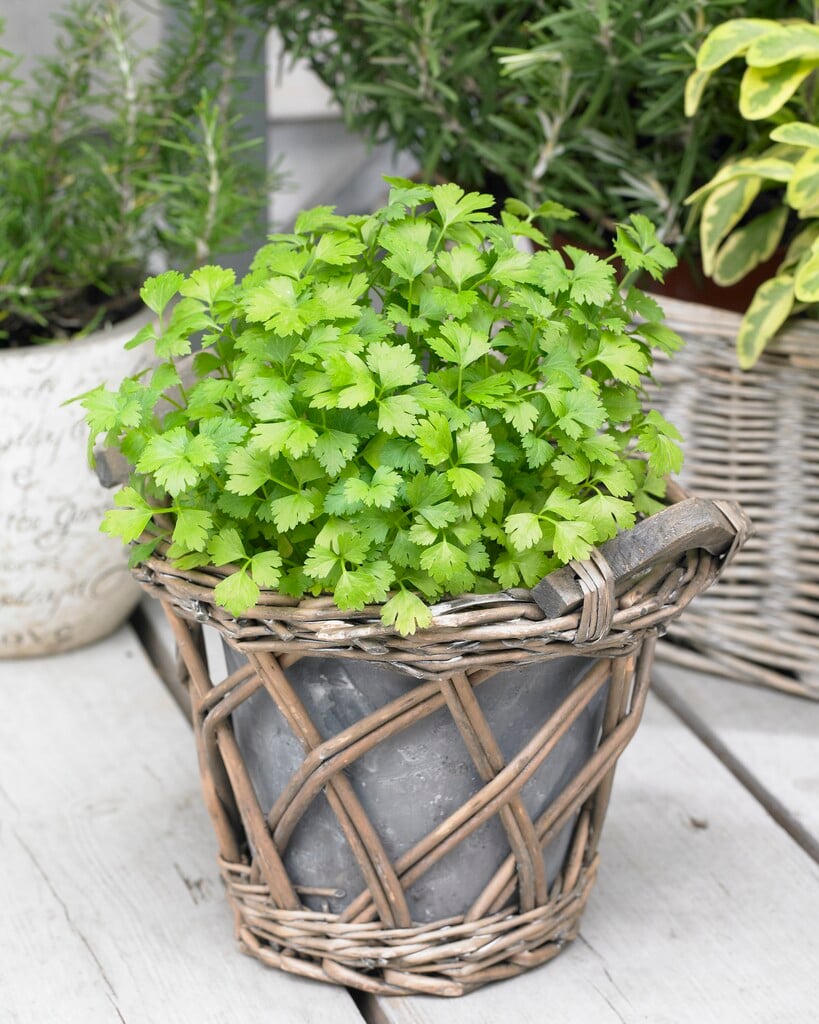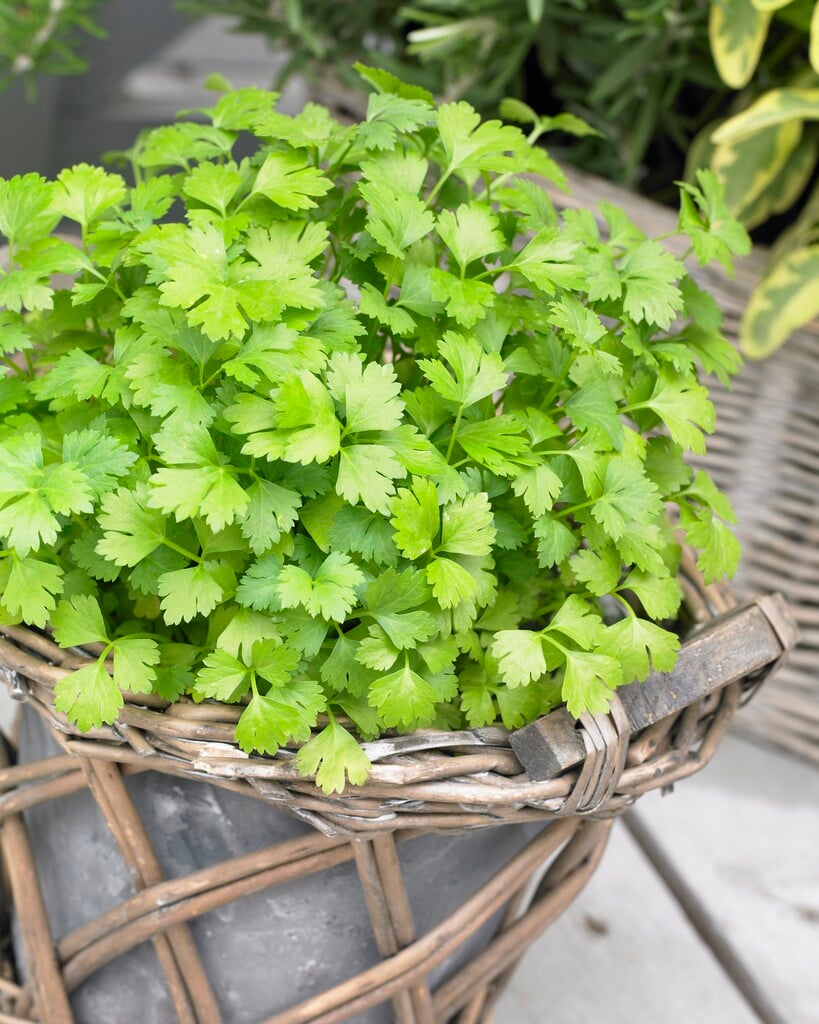Petroselinum crispum var. tuberosum
Hamburg parsley
Introduced to England in the 18th century, this was popular for about 100 years and is still commonly eaten in Germany. The leaves are similar to that of parsley, in appearance and taste, and can be used in the same way but the difference to most parsleys in that the edible roots resemble parsnips and grow up to about 15cm long. The roots are described as tasting like a cross between parsnips and parsley or parsnips and celery - sweetest and tastiest if cooked. The roots are frost resistant and ready to harvest in late Autumn /early Winter and unusually the largest roots taste the best. This is a biennial, grown as an annual - if you let it flower the leaves will be inedible and the plant will then die.
Other common names
parsnip-rooted parsleyturnip-rooted parsley
Synonyms
Petroselinum crispum Radicosum GroupPetroselinum crispum var. tuberosum 'Hamburg'
see morePetroselinum tuberosum
Size
Ultimate height
0.1–0.5 metresTime to ultimate height
1–2 yearsUltimate spread
0.1–0.5 metresGrowing conditions
Moisture
Moist but well–drainedpH
Acid, Alkaline, NeutralColour & scent
| Stem | Flower | Foliage | Fruit | |
| Spring | Green | |||
|---|---|---|---|---|
| Summer | Yellow Green | Green | ||
| Autumn | Green | |||
| Winter | Green |
Position
- Full shade
- Partial shade
Aspect
East–facing or South–facing or West–facing
Exposure
Exposed or Sheltered Hardiness
H6Botanical details
- Family
- Apiaceae
- Native to GB / Ireland
- No
- Foliage
- Deciduous
- Habit
- Bushy
- Genus
Petroselinum are aromatic biennials with broad, pinnate to 3-pinnate leaves and compound umbels of small white or pale green flowers
- Name status
Correct
How to grow
Cultivation
Grow in fertile, moist, but well-drained soil in full sun or partial shade. As this is a root crop seedlings will need to be thinned to about 20cm apart. Keep well watered all summer as this is when the roots put on the most growth. Harvest roots through autum and early winter. This is a biennial plant but is normally grown as an annual. See parsley cultivation for further advice.
Propagation
Propagate by seed. See sowing vegetable seeds
Suggested planting locations and garden types
- City and courtyard gardens
- Cottage and informal garden
- Patio and container plants
Pruning
Remove flowers unless wanted for seed
Pests
May be susceptible to carrot fly, aphids, celery leaf miner and slugs.
Diseases
May be susceptible to a leaf spot and a virus
Love gardening
Sign up to receive regular gardening tips, inspiration, offers and more
View our Privacy Policy
Get involved
The Royal Horticultural Society is the UK’s leading gardening charity. We aim to enrich everyone’s life through plants, and make the UK a greener and more beautiful place.

